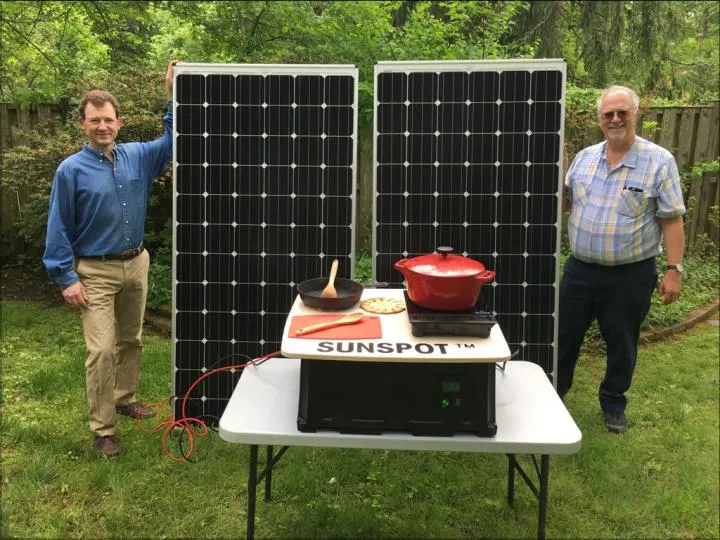PV for cooking
Aug 21, 2019 09:25 PM ET
- Traditional solar cookers concentrate sunlight on mirrored surfaces and convert it into heat. But this summer, Sunspot unveiled Sunspot Solar Electric Cooking, a new cooker based on PV technology. The system relies on two PV modules, a lead-carbon battery, an inverter, and an induction cooktop.

The Sunspot Solar Electric Cooking system is the winner of the 2nd Renewable Transformation Challenge, organized by Elsevier and the International Solar Energy Society (ISES).
Compared to other traditional solar cookers, which usually concentrate sunlight on mirrored surfaces and convert it into heat, this new device, developed by U.S.-based company Sunspot, is based on electricity generated by PV technology.
“The combination of innovative micro-financing, efficient consumer-grade electric cooking appliances and low-cost photovoltaic modules have made it possible to introduce the solar-electric cooking system, which can compete with traditional biomass stoves,” Sunspot said in a statement.
The device consists of PV modules, a lead-carbon battery, an inverter, and an induction cooktop. The company claims the inductive stove is more than 80% efficient and able to turn on and off instantly, in order to eliminate fuel waste and allow changes in cooking patterns. The device can also be used to provide electricity for LED lamps, mobile phone charging ports and small appliances, when it is not used for cooking.
“The electrification of traditional cooking methods in developing countries, which generally rely on the unsustainable use of biomass fuels, will be a significant game changer, and will also help accelerate energy access to all off-grid populations so they can meet their other end use energy needs as well,” said David Renne, president of ISES.
Pay-As-You-Go
Meanwhile, so-called pay-as you-go technologies, which provide solar power to rural communities without access to electricity, are also pointed out as an option to use the PV cooker. The pay-as you-go model is being used for minigrid projects in countries with low access to power.
A recent report from Wood Mackenzie showed that a grid connection for rural villages can cost around $500-$2,200, on average, per connection. By contrast, small-scale PV systems with a 5-250 Wdc capacity, operated on a pay-as-you-go basis, cost around $80-$550, on average.
Also read


